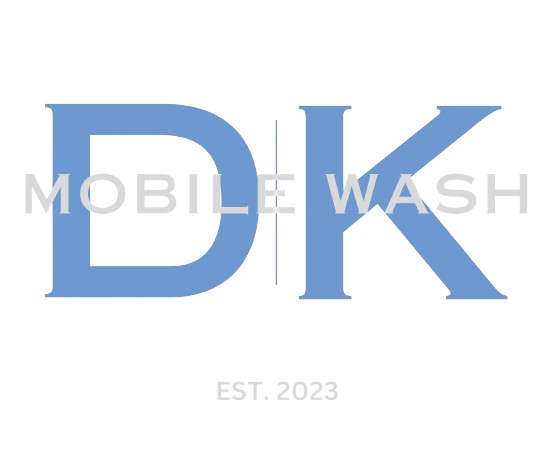5 Common Car Detailing Mistakes to Avoid: Expert Tips for DIY Car Care
5 Common Car Detailing Mistakes to Avoid: Expert Tips for DIY Car Care
Taking care of your car’s appearance is an essential part of maintaining its value and longevity. While it’s tempting to tackle detailing tasks on your own, many DIYers make common mistakes that can end up damaging their vehicle’s paint, interior, or finish. Whether you’re new to car detailing or a seasoned DIYer, knowing what mistakes to avoid can help you keep your car looking its best without costly repairs.
In this blog post, we’ll highlight five common car detailing mistakes and share expert tips to help you avoid them. By the end of this post, you’ll be better equipped to care for your vehicle like a pro.
1. Using the Wrong Cleaning Products
Mistake: Not all cleaning products are suitable for car detailing. Using household cleaners, harsh chemicals, or the wrong products can damage your vehicle’s paint, upholstery, or other surfaces.
Why It’s a Problem: Household cleaners often contain abrasive ingredients or chemicals that can strip your car’s paint or leave residues behind. Similarly, using the wrong cleaner on leather or fabric interiors can lead to stains, discoloration, or cracking.
Expert Tip: Always use cleaning products specifically designed for automotive use. For example, use pH-balanced car wash soap that won’t strip wax coatings or damage the paint. Opt for interior cleaners that are safe for the specific materials in your car, such as leather conditioners for seats or fabric cleaners for upholstery.
2. Washing Your Car with Dirty Towels or Sponges
Mistake: Reusing dirty towels, sponges, or wash mitts without cleaning them properly is a common mistake many DIY detailers make.
Why It’s a Problem: Using dirty towels or sponges means you’re likely transferring dirt, dust, and debris back onto your car’s surface, which can cause scratches and swirl marks. Even small particles can cause significant damage over time.
Expert Tip: Always use a clean microfiber towel or wash mitt for each stage of the detailing process. Microfiber is gentle on paint and absorbs dirt more effectively than other materials. Additionally, make sure to regularly clean your towels and mitts between washes to avoid reintroducing contaminants.
3. Rubbing or Scrubbing Too Hard
Mistake: Scrubbing your car’s exterior or interior with excessive force is a common mistake, especially when trying to remove stubborn dirt or stains.
Why It’s a Problem: Scrubbing too aggressively can damage the paint, leaving swirl marks, scratches, or even discoloration. This is especially problematic for sensitive areas, like your car’s clear coat. When cleaning interiors, using too much pressure on leather or fabric can also cause wear and tear.
Expert Tip: Always use gentle, circular motions when washing and detailing your car. Let the soap or cleaner sit for a few minutes to break down grime and contaminants before gently wiping them away. For tough stains, try using a stain remover designed for your car’s surfaces and follow the product’s instructions carefully.
4. Skipping the Drying Process
Mistake: After washing your car, many people make the mistake of not properly drying the vehicle, leading to water spots and streaks.
Why It’s a Problem: Water spots occur when water evaporates, leaving behind mineral deposits on your car’s surface. These spots can be difficult to remove, and if left untreated, they can dull the paint. Additionally, streaks can mar the shine of your car and make it look unpolished.
Expert Tip: Always dry your car thoroughly using a clean, soft microfiber towel. Start with the top of the vehicle and work your way down to avoid transferring water back to areas that are already dry. You can also use a car dryer or compressed air to help remove excess water from hard-to-reach areas, such as side mirrors, vents, and trim.
5. Not Applying Proper Protection
Mistake: Failing to apply a protective layer, like wax or sealant, after washing and detailing your car is a common oversight.
Why It’s a Problem: Washing your car removes dirt and grime, but it doesn’t protect the paint from future contaminants, UV rays, or weather-related damage. Without protection, the paint can become oxidized, scratched, and faded over time.
Expert Tip: After washing and drying your vehicle, always apply a layer of wax or paint sealant. Wax provides a protective barrier that shields your car’s paint from environmental elements, while sealants offer longer-lasting protection. In addition, regular waxing helps maintain the shine of your car and makes future cleaning easier.
Bonus Tip: Know When to Seek Professional Help
While DIY car care is great for regular maintenance, certain detailing tasks require professional expertise, especially if you’re short on time or if your car’s paint has serious issues. Some services that are best left to professionals include:
- Paint Correction: If your car has swirl marks, deep scratches, or oxidation, it may require professional polishing and paint correction.
- Ceramic Coating: For long-lasting paint protection, a ceramic coating applied by professionals offers superior durability and ease of maintenance.
- Deep Interior Cleaning: Professional interior detailing can address tough stains, odors, and deep cleaning that go beyond what DIY tools can achieve.
Conclusion: Master Your Car Detailing with These Tips
Avoiding common detailing mistakes is key to maintaining your vehicle’s appearance and ensuring its longevity. By using the right products, applying the correct techniques, and protecting your car’s paint, you can keep your vehicle looking its best without the risk of damage. And if you need assistance or want to ensure your car gets the best care possible, DK Mobile Wash is here to help with professional detailing services that bring convenience and quality to your door.
Ready to take your car care routine to the next level? Contact us today to schedule your next detailing service and keep your vehicle looking brand new for years to come!
%20copy%207.png)

.png)

%20copy.png)
%20copy%204.png)
%20copy%205.png)
%20copy%203.png)

.png)